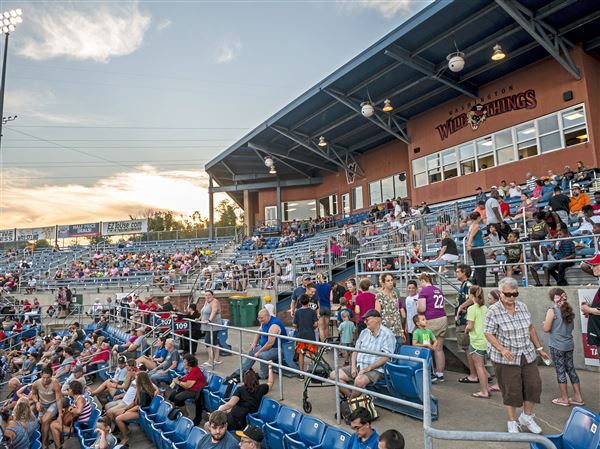James Gyre used to be a painter. He loves the feeling of moving paint around a canvas and wanted to learn how to paint the way the old masters did. So he started studying math.
“I arrived at math through art,” said Gyre, who founded the Pittsburgh-based studio Naked Geometry and was manning its booth in Gateway Center on Monday during the Dollar Bank Three Rivers Arts Festival. “I wanted to be a better painter and the best painters study geometry.”
His intricate work, laser-cut from wood, ranges in size from trinkets and jewelry a few inches across to 8- or 9-inch wide circles to large pieces measuring 3 by 2 feet. Prices reflect the time invested — five smalls for $20, circles starting around $50 and the biggest pieces beginning around $100. He will be at booth No. 58 in the Artist Market through Tuesday evening and also sells on Naked Geometry’s website, www.nakgeo.com.
While exploring what materials would be best for creating geometric art, Gyre settled on wood for the way it brings nature into his work, which itself is built on the geometry of nature. This was years ago, Gyre says, before the internet fell in love with sacred geometry. Now it’s not uncommon for Instagram pages with geometric patterns to have hundreds of thousands of followers.
“There always seems to be some way for the geometry to be a launching point,” he said.
His intricate work requires specialized tools. Nearly six years ago, he found them at TechShop, a maker space in Bakery Square. Gyre and a group of fellow artists, including Laura Gyre, his wife and artistic partner, decided to share memberships. Then, when TechShop closed and filed for bankruptcy in late 2017, the artists of Naked Geometry acquired and refurbished their own studio space in Lawrenceville.
Geometric patterns have been used in art for thousands of years, from Persian architecture to Celtic religious symbols. The intricate patterns are built on repetition, and to the untrained eye, can appear as though generated by computers. Some artists do use code to create patterns. They are often criticized by purists, who would rather rely on compasses and chisels than computers and laser cutters.
Gyre tries to find a balance; he uses Adobe Illustrator to create the designs but still draws the angles and shapes by himself. He uses a laser cutter to execute them, which allows him to easily replicate popular designs.
“There’s an aspect of these that is unmistakably art,” he said. “There is geometry, but there’s also art.”
Gyre uses only sustainably produced new wood or reclaimed wood. Some artists in Naked Geometry use other materials; John Anderson Westgard applies his background in chemistry to precious stone cutting. Gyre smiled as he pointed out a rectangular piece of dark wood with an inlaid pattern of lighter wood, contrasting in both color and texture. It was a co-creation by Gyre and Westgard, who both said they couldn’t have made the piece without the other’s help. This type of collaboration is one of the most exciting things about the field, Gyre said.
“[Geometric art] is like an ocean, and like our ocean, it’s not all explored. These shapes, like music, like love, are common for everybody.”
Gyre lives with multiple sclerosis, making it difficult to do the tedious work he loves. He knows he’ll have to adjust his artistic process.
“Eventually I might just say, ‘That’s enough stuff for now,’” Gyre said.
Westgard looked at his friend in disbelief and laughed.
“I just don’t see that happening,” he said.
Christian Snyder: csnyder@post-gazette.com.
First Published: June 11, 2019, 12:00 p.m.



















